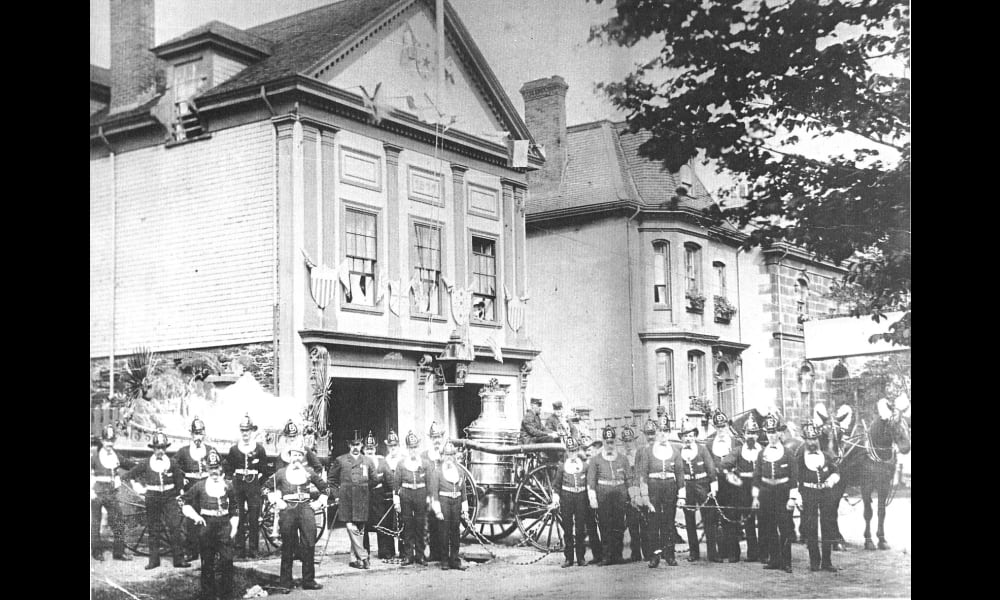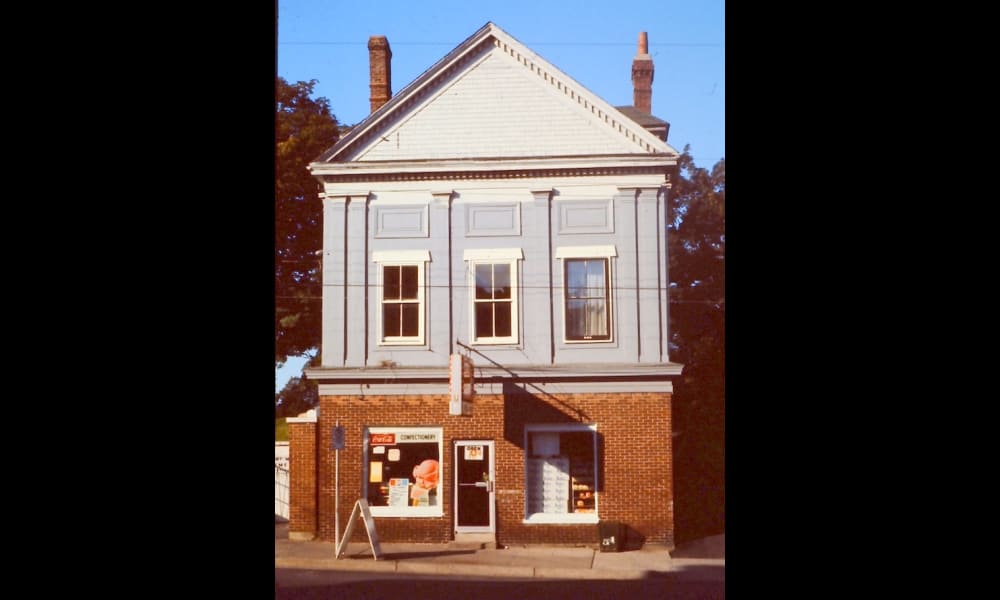The Queen Street Engine House operated from 1878 until 1906 and was considered one of the most successful and well-positioned engine houses of its time in Halifax.
Establishment and Location
The Queen Street Engine House was officially opened on November 9, 1878, in response to growing concerns about fire protection in the south end of Halifax. Although discussions about a new engine house for the area had taken place as early as 1875, it wasn't until 1877 that the city moved forward. The new building was located on Queen Street next to the cemetary, placing it strategically between Spring Garden Road and South Street.
Facilities and Equipment
When the Queen Street Engine House opened, it housed a full set of equipment, including a horse-drawn steam fire engine, a hose reel, and stabling for horses. Its construction was part of a broader shift in Halifax toward a more organized and modern fire service, particularly following several disastrous fires in the 1860s and early 1870s.
Personnel and Operations
The engine house was manned by members of the Union Engine Company, which was one of the key volunteer firefighting organizations at the time. In 1890, the company moved to a two-platoon system, and the Queen Street house remained one of its most important facilities until the Union Engine Company was officially dissolved in 1894. From that point, it became a municipal station under direct city control, continuing operations under the Halifax Fire Department.
Closure
By 1906, the Queen Street Engine House was decommissioned. Its closure was part of a realignment of resources following the continued professionalization and centralization of fire services across the city.
Legacy
The Queen Street Engine House served Halifax for 28 years, providing critical fire protection to a rapidly developing part of the city. It was remembered for its reliable equipment, ideal location, and competent personnel. It played an essential role in the transition from volunteer to fully municipal firefighting operations in the city.
Fire Responses and Personnel
Confirmed Fires Responded to by the Queen Street Engine House
The Queen Street Engine House, established in 1878 and manned by the Union Engine Company, was a key station in Halifax’s expanding southern district. During its 28 years of operation, it played an active role in responding to both major and routine fire incidents:
1. The Poor Asylum Fire – February 4, 1882
-
Nature: A catastrophic fire at the Halifax Poor Asylum on South Street.
-
Response: The Queen Street Engine House responded with its steam fire engine and crew.
-
Outcome: Despite best efforts, at least 31 confirmed fatalities occurred, making it the deadliest fire in Halifax’s 19th-century history. The Union Engine Company’s response was praised, though they were ultimately unable to contain the rapid spread within the old asylum structure.
2. South Barrington Street Fire (1883)
-
Location: Fire erupted in residential buildings along South Barrington Street.
-
Involvement: The Queen Street crew was first due to respond given its proximity.
-
Details: Fire damage was considerable, though no fatalities were recorded. Queen Street’s engine was noted for its effective water stream and strategic hose deployment.
3. Multiple Chimney and Small Dwelling Fires (1878–1894)
-
Frequency: The station regularly attended minor fires throughout the South End, including kitchen fires, chimney ignitions, and carriage house blazes.
-
Reports: These incidents appear in various city council and fireward committee records.
-
Impact: The Queen Street Engine House became known for quick turnout times and reliable suppression, particularly in the high-density residential areas around Clyde, Queen, and Morris Streets.
Notable Personnel of the Queen Street Engine House
The station was home to several key members of the Union Engine Company, some of whom continued under the municipal fire service following 1894.
Captain James C. Ray
-
Role: Officer in command at Queen Street prior to and after 1894.
-
Legacy: Instrumental in transitioning the company from volunteer to municipal control. Known for rigorous drills and effective fireground leadership.
-
Later Career: Promoted within the early Halifax Fire Department following municipalization.
James W. Hensley
-
Affiliation: Union Engine Company.
-
Specialty: Maintained and oversaw repairs on the steam engine and hose reels stationed at Queen Street.
-
Reputation: Respected for his technical knowledge and mechanical aptitude, particularly valued during winter months when equipment failures were common.
William Mahoney
-
Duties: Driver and caretaker for the engine house’s horse team.
-
Recognition: Credited with protecting valuable apparatus during a localized flooding incident in the engine house by moving equipment and hose stock to safety.
Role in Fire Service Transition
When the Union Engine Company was dissolved in 1894, the Queen Street Engine House was absorbed into the newly formed Halifax Fire Department. It continued operations under city control until its closure in 1906, by which time changes in coverage needs and infrastructure led to its decommissioning.




